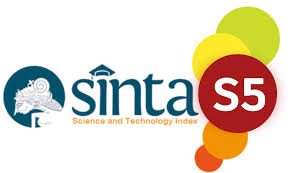Perancangan Prototype Brankas Menggunakan Sistem Pengenalan Wajah Dengan Metode Convolutional Neural Network (CNN)
DOI:
https://doi.org/10.37253/telcomatics.v8i1.7852Keywords:
Convolutional Neural Network, Face Recognition, BrankasAbstract
A safe-deposit box is a box used for keeping precious items. Safe-deposit boxes are designed to be difficult for people to open by force. There are various security systems that may be used in it, such as mechanical key, combinational lock, PIN, etc. However, a safe-deposit box is still prone to unpermitted access because anyone who knows the PIN or possesses the key is still able to open it. This research aims to create a safety-box prototype which has a face recognition system implemented on it to ensure no unauthorized person may access this box. Experiment is performed on three different classes, which are “erwinâ€, “unknownâ€, and “willyâ€. Class of “erwin†and “willy†are defined as safe owners, while “unknown†is defined as anyone who is not both owners. Classification on safe owners is considered success if the percentage output in corresponding classes is at least 90 %. Classification on “unknown†class is considered success if the result is at least 90 % or percentage on each class is lower than 90 %. Accuracy for each class is 0 %, 71.43 %, dan 100 %.
Downloads
References
M. üge Çarıkçı and F. Özen, “A Face Recognition System Based on Eigenfaces Method,” Procedia Technology, vol. 1, pp. 118–123, Jan. 2012, doi: 10.1016/J.PROTCY.2012.02.023.
B. Md Abdur Rahim, M. Najmul Hossain, T. Wahid, M. Shafiul Azam, and M. Abdur Rahim, “Face Recognition using Local Binary Patterns (LBP),” Type: Double Blind Peer Reviewed International Research Journal Publisher: Global Journals Inc, vol. 13, 2013.
M. Coskun, A. Ucar, O. Yildirim, and Y. Demir, “Face recognition based on convolutional neural network,” Proceedings of the International Conference on Modern Electrical and Energy Systems, MEES 2017, vol. 2018-January, pp. 376–379, Jun. 2017, doi: 10.1109/MEES.2017.8248937.
N. Delbiaggio, “A comparison of facial recognition’s algorithms,” 2017.
C. C. Aggarwal, “Neural Networks and Deep Learning,” Neural Networks and Deep Learning, 2018, doi: 10.1007/978-3-319-94463-0.
C. C. Aggrawal, Neural Networks and Deep Learning. New York: Springer, 2018. doi: 10.1007/978-3-319-94463-0.
R. Venkatesan and B. Li, Convolutional Neural Networks in Visual Computing : A Concise Guide. Boca Raton, Florida: CRC Press, 2018.
L. Bottou, “Stochastic Gradient Learning in Neural Networks,” Proceedings of Neuro-Nîmes 91, vol. 91, no. 8, p. 12, 1991.
T. Karras, S. Laine, and T. Aila, “A Style-Based Generator Architecture for Generative Adversarial Networks,” IEEE Transactions on Pattern Analysis and Machine Intelligence, vol. 43, no. 12, pp. 4217–4228, 2021, doi: 10.1109/TPAMI.2020.2970919.
J. Cheng, Y. Li, J. Wang, L. Yu, and S. Wang, “Exploiting effective facial patches for robust gender recognition,” Tsinghua Science and Technology, vol. 24, no. 3, pp. 333–345, 2019, doi: 10.26599/TST.2018.9010090.
“IoT Projects with NVIDIA Jetson Nano: AI-Enabled Internet of Things Projects for Beginners Book - EVERYONE - Skillsoft.” https://www.skillsoft.com/book/iot-projects-with-nvidia-jetson-nano-ai-enabled-internet-of-things-projects-for-beginners-a9706f67-be21-43ab-8c88-affedaf1a7a0 (accessed Jul. 28, 2023).
Downloads
Published
How to Cite
Issue
Section
License
Copyright (c) 2023 Telcomatics

This work is licensed under a Creative Commons Attribution 4.0 International License.








